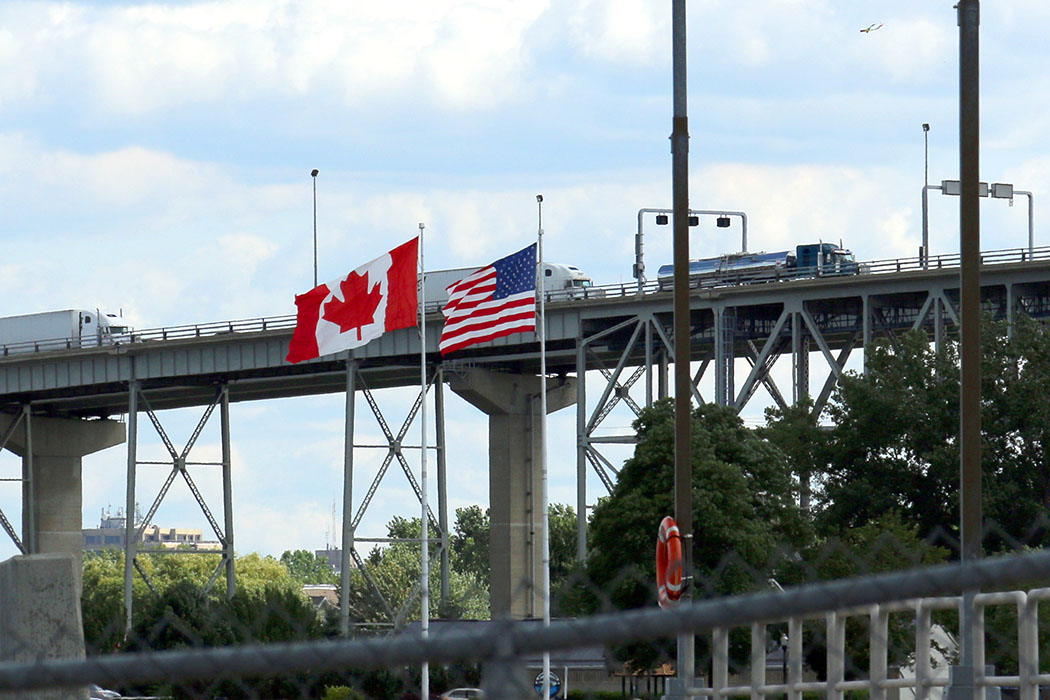
As a savvy importer, you ensure compliance at every turn. But what can your shipper or carrier do to help minimize delays when your cargo moves from Canada to the United States?
Documentation, timing, and communication create the ideal northern border customs entry as well as nonstop movement of your cargo into the United States.
Understand cross-border documentation
Carrier manifest enforcement
U.S. Customs and Border Protection (CBP) is enforcing the carrier manifest requirements at ports of entry along the northern border. As part of this enforcement, shippers may see trucks returned to Canada until the e-manifest is updated.
Per CBP requirements, the carrier manifest should list the carton count on the shipment, not the number of skids or pallets. Ensure your packing list and bill of lading clearly identify the carton count and that your carrier is using this information on your manifest. While CBP enforcement is at their discretion, don’t let this be a reason for the delay of your shipment.
Section 321/ de minimis
While the regulations provide for a cargo release for de minimis goods valued under $800 on the carrier manifest, some types of cargo have specific Partner Government Agency (PGA) requirements that require the customs broker to file the Type 86, formal or informal entry to provide the PGA data elements to the agency. PGA Policies on 321 and Returned American Goods and Personal Effects outlines the PGAs that require customs entry, including FDA, Consumer Product Safety, U.S. Environmental Protection Agency, etc.
CBP issued Frequently Asked Questions on de minimis, which outlines that Section 321 is not permitted for the following:
- Merchandise subject to antidumping and countervailing duties
- Merchandise subject to quota
- Merchandise subject to taxes by the IRS, including alcoholic beverages, cigars, cigarettes, and tobacco
If you ship regulated goods or PGA goods, ensure your bill of lading and shipping documents include instructions for entry by your customs broker if the value of goods is less than $800.00 USD.
Comprehensive and clear documents
It is key that documentation provided to the carrier and customs broker is legible, and all documents provided by the shipper to the carrier are passed onto the customs broker. Incomplete information on the shipment can cause a delay in the release of your shipment. Ensure your carrier provides the United States–Mexico–Canada Agreement (USMCA) certificate to the broker and that the customs broker also has your USMCA certificate on file. If you are importing using the U.S. Goods Returned provisions, ensure that your customs broker has the supporting documentation required to make entry.
Promptly communicate changes or updates
The carrier should communicate any changes in the ETA to the port of entry or a change in the port of entry to the customs broker. This will ensure that the entry is ready at the time of arrival to the border.
At times, CBP will request proof of delivery of the shipment to support the cargo release of the shipment. It is imperative that carriers and consignees provide this documentation in a timely manner to ensure compliance with CBP regulations.
To ensure that your customs broker is notified promptly of your shipment by the carrier, check that the bill of lading and shipping documentation state the name and contact information for your customs broker.
Communicate changes and comply with FDA processes
FDA port code changes
Occasionally, a carrier may need to change the port of entry into the United States. Best practice in this case is for the carrier to update their manifest to reflect the change of the port, not to cancel their entry. The U.S. Food and Drug Administration (FDA) recently updated their ACE filing requirements to allow for port code changes on FDA-regulated products.
This means that carriers no longer need to cancel their manifest; the carrier can update the manifest, and the entry will transfer to the new port of entry. Carriers should immediately notify the customs broker of any changes to the manifest or port of entry to ensure compliance and timely entry filing.
FDA examinations
The FDA regulates many products that cross the border, including food, drugs, medical products, radiation-emitting products, biologics, cosmetics, and tobacco. Carriers should be aware when they are moving FDA-regulated goods from Canada to the United States. For food entries that require FDA Prior Notice filing, carriers can check the C.H. Robinson PAPS tracker.
When carriers arrive at the border and confirm their cargo release with CBP, they should also confirm that the FDA does not have a hold on the cargo. If there is a hold on the cargo, the carrier will need to move to the customs station for the exam. If the carrier does not proceed to the exam station, there is a risk that the cargo may need to be returned to the port of entry to be examined. This causes additional delays and costs for the shipment and could potentially result in penalties.
What can you do? Best practices to consider
Every party to this transaction must do their part to ensure the smooth entry of your goods across the border. Review these operational challenges with your shippers and carriers to put a plan in place that proactively addresses them.
Expect your customs broker to periodically review your business and communicate any operational challenges. Additionally, if you are shipping cargo to the United States for the first time, work with your customs broker to understand the government requirements and tariff classification to import these goods to avoid delays at the time of entry.
Stay informed
Developments in customs and trade continue to evolve—stay informed to be prepared:
- Connect with our trade policy experts
- View our Trade & Tariff Insights
- Subscribe to our Client Advisories



